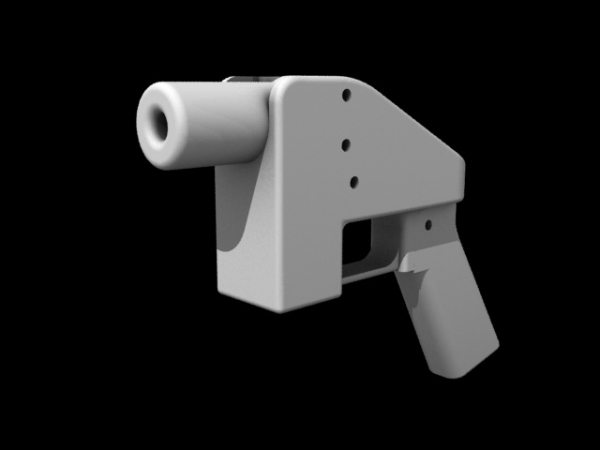The Transportation Security Administration claims to have found a 3D printed gun in a passenger’s carry-on bag at Reno Airport.
The TSA website revealed a revolver, together with .22 bullets, but it seems to raise more questions than it answers.
It appears the gun wasn’t functional, as even the TSA describes it as a replica and it had no firing pin, but it was loaded with live ammunition.
One of 68 guns seized this week
The border agency claimed it was one of 68 firearms found in carry-on bags in just one week. 60 of them were loaded, while 21 had a round chambered and were ready to fire, which is perhaps a bigger issue. The presence of a 3D printed gun in any capacity, though, is a worrying development for all of us.
While 3D printed guns have been in the press for a long time, this design just isn’t in the public domain. So this casual announcement as part of the TSA’s weekly blog advising travelers about carrying firearms has piqued the interest of the 3D printing community.
Back to ‘that’ 3D printed gun
Of course, the most famous 3D printed gun is The Liberator, which was a clunky affair made from ABS plastic with a metal firing pin. There were serious doubts about its safety, but nobody can deny the impact the design had on the wider world. Since then a number of different designs have surfaced.
Solid Concepts recently printed a .45 caliber handgun with a magazine and there have even been calls for people to register their 3D printers simply because they could use the hardware to produce their own gun. This seizure could provide valuable ammunition for those that say a 3D printer is potentially a deadly weapon in the making.
It’s illegal to make gun parts
It is already illegal to make firearm components that an X-Ray machine cannot detect after the Undetectable Firearms Modernization Act came into force last year.
It was introduced in 2013, but it was reintroduced and driven through last year when the Department of Homeland Security showed that TSA officers failed to intercept 95% of contraband.
It comes just weeks after a renewed push for registration for 3D printers, so the timing is a little convenient. The fact that this gun is not in the public domain also raises further doubts, although it is possible that someone could have scanned the constituent parts of a revolver and intended to fit the firing pin at a later time.
3D printed guns have come a long way
While the original ABS handgun was massively overbuilt to cope with the stresses that tended to destroy most of the early 3D printed guns after just a few shots, the guns have improved over time. Hexen’s Reprringer, another .22 revolver, could reportedly withstand a number of shots.
What is this gun?
Unfortunately, the TSA hasn’t released too much information about the gun that was found. It could be an ambitious plan by an amateur that was destined to blow up in their hand the first time they fitted a pin. It could also be a prototype for a company that intended to produce the gun legally. We cannot tell for sure.
All we really know is that 3D printed guns are in the news again and that is not good for any of us.




